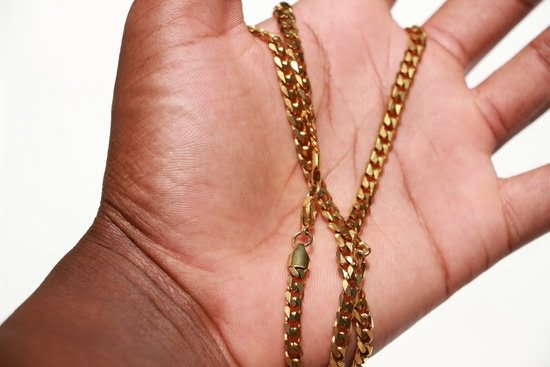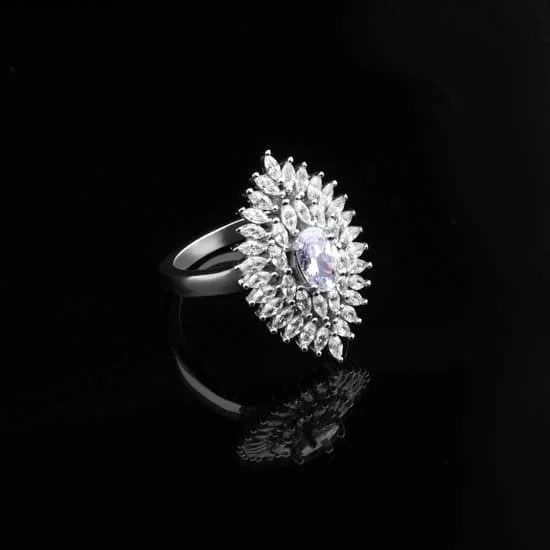What is African beading jewelry? This traditional art form holds a rich and significant place in the history and culture of the continent. African beading jewelry has been an integral part of various African cultures, showcasing intricate designs and cultural symbolism that reflect the heritage and traditions of different regions and tribes.
The history of African beading jewelry dates back centuries, with its origins rooted deep in African traditions and craftsmanship. Over time, this art form has evolved, adapting to changing trends while still maintaining its cultural significance. Each piece of African beading jewelry tells a story, representing identity, status, beliefs, and even spiritual connections within Africa’s diverse communities.
Cultural symbolism plays a crucial role in African beading jewelry, with patterns and designs holding specific meanings unique to each tribe or region. From fertility symbols to protective motifs, these intricate details add layers of depth to the craftsmanship of every piece. The use of various materials like beads, gemstones, metals, and more further enhance the beauty and cultural resonance of African beading jewelry.
History of African Beading Jewelry
African beading jewelry has a rich history that dates back centuries, reflecting the diverse cultures and traditions of the continent. The practice of creating intricate beadwork has been passed down through generations, serving as a symbol of identity, status, and cultural heritage. The origins of African beading jewelry can be traced to various regions across the continent, where different tribes and communities have developed unique styles and techniques.
Origins of African Beading Jewelry
The tradition of African beading jewelry is rooted in ancient customs and rituals, with beads often used in ceremonies, celebrations, and everyday wear. In some cultures, certain types of beads are believed to hold spiritual or protective qualities, adding a deeper layer of significance to the jewelry. The craftsmanship involved in creating these pieces has been honed over time, with artisans incorporating traditional methods and materials into their work.
Evolution of African Beading Jewelry
Over time, African beading jewelry has evolved to incorporate a fusion of traditional techniques and modern styles. As trade routes expanded and cultures interacted, new materials were introduced, leading to innovative designs and patterns. Today, African beading jewelry continues to thrive as a vibrant art form that reflects both the past and the present. From intricate necklaces to elaborate bracelets, each piece tells a story of creativity and craftsmanship that has stood the test of time.
Cultural Symbolism
African beading jewelry is deeply rooted in the culture and history of the continent, carrying significant meanings and symbolism behind its intricate patterns and designs. The cultural symbolism embedded in African beading jewelry varies across different regions and tribes, reflecting a rich tapestry of traditions and beliefs. Each bead, color, and motif in African beading jewelry conveys specific messages that are often tied to personal identity, social status, or even spiritual beliefs.
In many African societies, beads have been used as a form of communication, with certain colors and patterns symbolizing specific virtues or values. For example, red beads may represent love or courage, while white beads could symbolize purity or spirituality.
Additionally, the arrangement of beads in African jewelry can convey messages related to fertility, protection, or even clan lineage. Understanding the cultural symbolism behind African beading jewelry not only enhances its aesthetic appeal but also deepens our appreciation for the traditions and stories passed down through generations.
Moreover, the designs found in African beading jewelry often reflect local flora and fauna, mythological beings, or historical events that hold significance within a particular community. By examining these patterns and motifs closely, one can gain insights into the worldview and collective memory of the people who create and wear these unique pieces of art.
The intricate craftsmanship and attention to detail in African beading jewelry serve as a testament to the skillful hands and creative minds that have preserved this traditional art form for centuries.
| Cultural Symbolism Element | Meaning |
|---|---|
| Red Beads | Represent love or courage |
| White Beads | Symbolize purity or spirituality |
| Arrangement of Beads | Convey messages related to fertility, protection, or clan lineage |
Materials Used
African beading jewelry is a traditional craft that holds deep cultural significance across the continent. One of the most fascinating aspects of African beading jewelry is the diverse range of materials used to create these beautiful pieces. From beads to gemstones to metals, each element plays a vital role in the overall design and symbolism of the jewelry.
Here are some of the key materials commonly used in creating African beading jewelry:
- Beads: Beads are perhaps the most essential component of African beading jewelry. They come in various shapes, sizes, and colors, each representing different meanings and symbols based on traditional beliefs and cultural references.
- Gemstones: Gemstones like turquoise, coral, and agate are often incorporated into African beading jewelry for their vibrant colors and natural beauty. These precious stones add a touch of elegance and sophistication to the pieces.
- Metals: Metals such as brass, copper, and silver are frequently used to enhance the durability and aesthetic appeal of African beading jewelry. Artisans often incorporate intricate metalwork into their designs to create unique patterns and textures.
The combination of these materials results in stunning pieces that not only showcase exquisite craftsmanship but also carry significant cultural meanings. Whether it’s a necklace, bracelet, or pair of earrings, African beading jewelry reflects the rich heritage and traditions of its creators. The use of such varied materials exemplifies the creativity and artistry that define this ancient craft.
Techniques and Methods
African beading jewelry is a traditional art form that holds deep cultural significance in the history of the continent. The intricate techniques and methods involved in crafting these pieces highlight the craftsmanship and attention to detail that are characteristic of African artistry. From the choice of materials to the execution of delicate designs, each step in creating African beading jewelry showcases the rich heritage and creativity of African artisans.
When it comes to techniques and methods used in crafting African beading jewelry, there are a variety of approaches that vary depending on the region and tribe. Some tribes use intricate weaving techniques to create complex patterns, while others may focus on stringing beads together to form geometric shapes or symbolic motifs. Additionally, some artisans incorporate metalwork or gemstones into their designs to add an extra layer of beauty and intricacy to their creations.
To give you a better understanding, here are some common techniques and methods used in crafting African beading jewelry:
- Stringing beads: Beads are carefully selected and strung together to create unique patterns and designs
- Weaving techniques: Intricate weaving patterns are used to create detailed motifs and symbols
- Wirework: Metals such as copper or brass are incorporated into jewelry pieces for added embellishment
Each technique requires skill, patience, and creativity on the part of the artisan, resulting in stunning pieces of jewelry that reflect the cultural heritage and artistic traditions of Africa. Whether you’re drawn to the vibrant colors, meaningful symbols, or meticulous craftsmanship, African beading jewelry continues to captivate audiences around the world with its beauty and cultural significance.
Regional Variations
African beading jewelry is a rich and diverse form of adornment that reflects the cultural heritage and traditions of various regions and tribes across the continent. Each region and tribe has its own unique style, patterns, and techniques when it comes to creating beaded jewelry. From the bold and vibrant Maasai beadwork of East Africa to the intricate and geometric designs of the Zulu people in Southern Africa, these variations showcase the diversity and creativity within African beading jewelry.
In West Africa, specifically among the Yoruba people of Nigeria, beadwork is traditionally used as a form of communication and expression. Bead colors and patterns are often symbolic, representing different aspects of life such as wealth, status, or spiritual beliefs. The intricate waist beads worn by women in this region not only serve decorative purposes but also hold cultural significance in terms of femininity, fertility, and protection.
Moving further east to Ethiopia, one can find unique Ethiopian Coptic crosses made with intricate beadwork. These crosses are not only symbols of faith but also pieces of art that demonstrate the craftsmanship and skill of Ethiopian artisans.
The bright colors and detailed patterns in these crosses reflect the rich history and spiritual traditions of the Ethiopian people. Overall, exploring the regional variations of African beading jewelry provides a glimpse into the diverse cultures and traditions that make up this fascinating art form.
Modern Adaptations
In recent years, there has been a growing trend of incorporating African beading jewelry into contemporary fashion and accessories. Designers and artists from around the world have been inspired by the rich history and cultural significance of African beading jewelry, leading to a fusion of traditional craftsmanship with modern design aesthetics. The vibrant colors, intricate patterns, and symbolic meanings found in African beadwork have captivated the fashion industry, resulting in stunning pieces that celebrate the artistry of the continent.
One of the reasons for the popularity of African beading jewelry in modern fashion is its unique ability to add a touch of individuality and cultural authenticity to any outfit. From statement necklaces to bold bracelets, these pieces are not just accessories but also storytelling elements that connect wearers to African heritage and traditions.
Whether it’s a simple beaded earring or a more elaborate beaded collar, each piece carries with it a sense of history and artistry that sets it apart from mass-produced jewelry.
Contemporary designers often collaborate with African artisans to create new interpretations of traditional beading techniques, resulting in innovative designs that blend old-world charm with contemporary flair. By reimagining classic patterns and experimenting with new materials, these collaborations breathe new life into African beading jewelry, introducing it to a global audience hungry for unique and meaningful pieces.
As consumers become more conscious about ethical fashion practices and sustainable sourcing, African beading jewelry serves as a shining example of craftsmanship that honors both tradition and innovation.
| Aspects | Details |
|---|---|
| Unique Touch | African beading jewelry adds individuality and cultural authenticity to outfits. |
| Collaboration | Contemporary designers collaborate with African artisans for new interpretations. |
| Ethical & Sustainable | African beading jewelry reflects ethical practices & sustainable sourcing in modern fashion. |
Tips for Caring for African Beading Jewelry
African beading jewelry is not only a stunning form of adornment but also holds deep cultural significance for many African communities. In order to preserve the beauty and longevity of these intricate pieces, it is important to understand how to properly care for and maintain them. Here are some useful tips and advice on maintaining your African beading jewelry:
Storage
When storing your African beading jewelry, it is essential to keep them away from direct sunlight and moisture. Ideally, store them in a cool, dry place such as a jewelry box or pouch to prevent oxidation or tarnishing. Avoid exposing them to harsh chemicals or perfumes which can damage the beads or metals.
Cleaning
To clean your African beading jewelry, use a soft and dry cloth to gently wipe off any dirt or oils accumulated from wear. For tougher stains, you can use a mild soap diluted in water, but make sure to dry them thoroughly afterwards. Avoid using abrasive cleaners or brushes that can scratch the surface of the beads or stones.
Maintenance
Periodically check your African beading jewelry for any loose beads or threads, and restring them if necessary to avoid breakage. It is also advisable to remove your jewelry before engaging in activities that may expose them to excessive sweat or impact, such as sports or heavy lifting. By practicing regular maintenance and care, you can ensure that your African beading jewelry remains beautiful and intact for years to come.
Conclusion
African beading jewelry holds a significant place in the history and culture of the continent, reflecting the rich traditions and craftsmanship of African artisans. From its ancient origins to its modern adaptations, African beading jewelry continues to captivate with its intricate patterns, vibrant colors, and cultural symbolism. The use of various materials like beads, gemstones, and metals, along with unique techniques and methods, add to the allure and beauty of these pieces.
The regional variations in African beading jewelry showcase the diverse styles influenced by different tribes and regions across Africa. Each design holds a story or cultural significance, making every piece truly unique. As contemporary designers incorporate these traditional elements into modern fashion and accessories, there is a fusion of old-world charm with new-age trends that further enhances the appeal of African beading jewelry.
For those who appreciate the artistry and craft behind African beading jewelry, it is important to understand the care required to preserve these timeless pieces. Proper care ensures longevity and retains the beauty of these handmade creations for generations to come.
By exploring this cultural art form further, one not only appreciates the beauty of African beading jewelry but also learns about the history, traditions, and cultural significance embedded in each bead and pattern. Let us continue to celebrate and support this unique heritage that continues to inspire awe and admiration worldwide.
Frequently Asked Questions
What Is the Purpose of African Beads?
African beads serve multiple purposes in different cultures across the continent. They are often used as a form of adornment to enhance one’s beauty or social status. Additionally, African beads can also have symbolic significance, representing aspects such as spirituality, cultural heritage, or even serving as protective amulets.
What Is Beading Jewellery?
Beading jewelry is the art of creating jewelry pieces using various types of beads. This craft involves stringing beads together in different patterns and designs to make items like necklaces, bracelets, earrings, and more. Beading jewelry allows for endless creativity and personal expression through the combination of colors, shapes, and materials.
Which Tribe in Africa Is Famous for Their Beaded Jewellery?
The Maasai tribe in East Africa is particularly famous for their intricate beaded jewelry. Maasai beadwork holds deep cultural significance within the community and is often used to convey messages about age, marital status, wealth, or even spiritual beliefs. Their vibrant and colorful beadwork has become iconic worldwide as a symbol of Maasai culture.

Welcome to my jewelry blog! My name is Sarah and I am the owner of this blog.
I love making jewelry and sharing my creations with others.
So whether you’re someone who loves wearing jewelry yourself or simply enjoys learning about it, be sure to check out my blog for insightful posts on everything related to this exciting topic!





